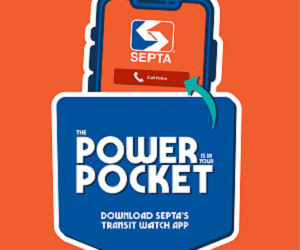
Comprehensive Bus Network Redesign
June 21, 2018

A bus network redesign is a thorough design process that looks at a public transit service area in its entirety. The redesigned bus network is drawn from scratch. It derives the new bus network from today's needs only. Usually the new network ends up 70-90% like the existing network, but lines are retained because they arise from this analysis, not because they're existing.
The bus network design process is one component of the Comprehensive Bus Network Redesign project. This stage is informed by data gathering, as well as goal setting reached through public and stakeholder outreach. Once bus network designs are created, there is extensive public and stakeholder outreach before the bus network design is finalized and implemented. This is a multi-year effort and will be undertaken in the next phase of this project.
Over the past year, SEPTA has been working with Jarrett Walker and Associates (JWA) to assess our existing bus network, and explore if a bus network redesign would be valuable to help address the decline in ridership on transit. The result of the study is the Philadelphia Bus Network Choices Report, which can be publicly viewed here.
This report studies the existing performance of bus services within the City of Philadelphia, in the context of the environment in which they operate and the needs and demands they try to serve. The goal of this report is to provide a background of facts and insights that can provide direction to any effort to redesign the bus network.
The report is called a Choices Report because it gives options. If the goal of any system improvement were increased ridership, there are a series of network design approaches that could be taken, outlined in the last chapter. However, ridership is not the only goal of transit networks, and many other expectations will need to be weighed to determine if these strategies should be pursued.
In other words, transit planning requires difficult decisions about how to balance competing goals, and these decisions should be made locally based on local discussion with extensive stakeholder and public outreach. That's where you come in. Learn more about SEPTA's existing bus network and the choice we will face by reading the Choices Report in its entirety.
The Philadelphia Bus Network Choices Report is only a first look. Now that the initial assessment is complete, SEPTA's next step will be to release a Request for Proposals (RFP) in order to hire consultants to take the findings of this report and start the Comprehensive Bus Network Redesign (CBNR) process. The CBNR process will last a few years, and will involve widespread public outreach and coordination throughout SEPTA's service area, so there will be many opportunities to get involved.
This website will house information and updates to help you stay informed and up-to-date as the project advances. It can also answer any questions you have about the report.



